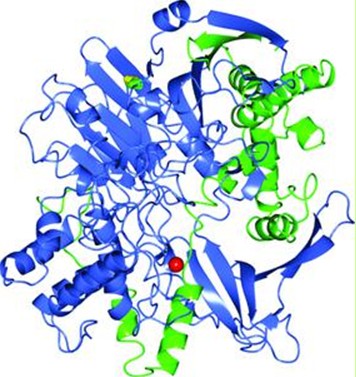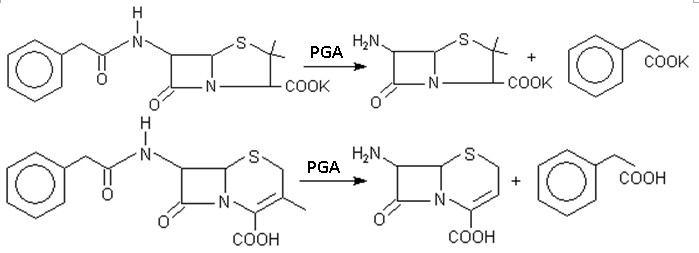
Description: Penicillin G acylase (PGA; EC 3.5.1.11) is a hydrolytic enzyme that acts on the side chains of penicillin G.
General description
Penicillin G acylase (PGA; EC 3.5.1.11,also known as Penicillin G amidase;Penicillin G amidohydrolase) is a hydrolytic enzyme that acts on the side chains of penicillin G, cephalosporin G and related antibiotics to produce the β-lactam antibiotic intermediates 6-amino penicillanic acid (6-APA) and 7-amino des-acetoxy cephalosporanic acid (7-ADCA), with phenyl acetic acid (PAA) as a common by-product. These antibiotic intermediates are the building blocks of semi-synthetic penicillins (ampicillin, amoxicillin, cloxacillin, salbactum) and cephalosporins (cephadroxil, cefalexins, etc.).
This enzyme is a heterodimeric protein consisting of a small α-subunit and a large β-subunit, which are formed by the processing of a single polypeptide precursor. PGA belongs to the structural superfamily of N-terminal nucleophile hydrolases that share a common fold around the active site bearing a catalytic serine, cysteine, or threonine at the N-terminal position.

In 2007, it is estimated thatβ-lactam antibiotics have annual sales of ∼$15 billion and make up 65% of the total antibiotics market; the annual consumption of PGA is estimated to be in the range of 10–30 million tons.
Appearance
Yellow or brown liquid
Specifications
Purity; >90%
Molecular weigt: α-subunit 28kd
β-subunit 70kd
Activity: 1000u/ml
Stability: 18 months at -20℃
Unit definitin
One unit is defined as the amount of enzyme which hydrolyzes 1 μmol benzylpenicillin per minute at pH 8.0 and 28℃
Storage
This product should be stored at -20℃ keeping container tightly closed to isolated from air.


